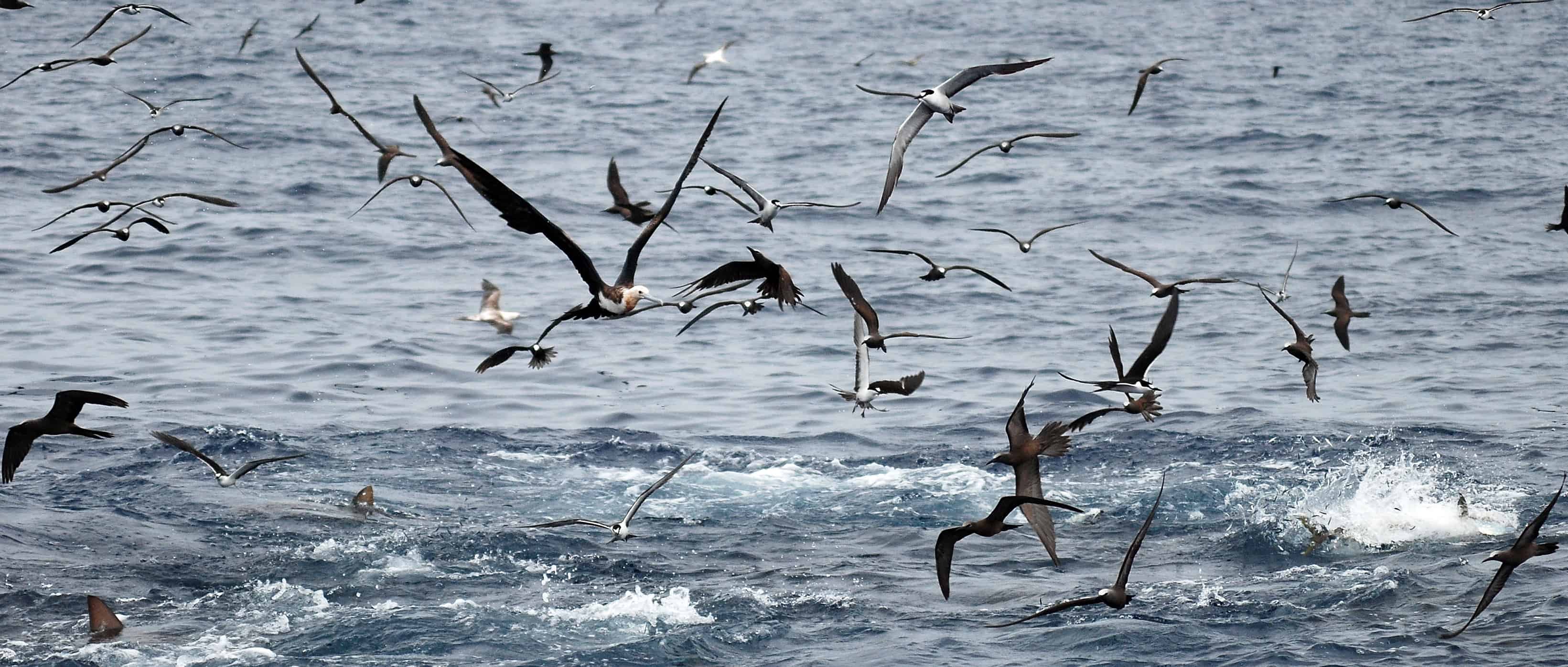Share this article
Plastic Impacts Seabirds Worldwide
Almost all seabirds alive today have consumed some form of plastic, and the number will only increase in the future if no action is taken to stop plastic from entering the ocean, according to a recent study.
In the study published in the Proceedings of the National Academy of Sciences, researchers estimated that 90 percent of individual seabirds have consumed plastic, which can impact the gut, cause weight loss and sometimes even death. “This is a huge amount and really points to the ubiquity of plastic pollution,” said lead author Chris Wilcox, a senior research scientist at Australia’s Commonwealth Scientific and Industrial Research Organization (CSIRO) Oceans and Atmosphere Flagship in a press release.
Further, in an earlier study Wilcox contributed to, he found that 4.8 million metric tons of plastic enter the ocean each year. Both studies were conducted by a working group at UC Santa Barbara’s National Center for Ecological Analysis and Synthesis (NCEAS) and supported by the Ocean Conservancy in Washington, D.C.
As part of the study, researchers implemented a new technique of using oil that seabirds secrete as a quicker and easier way to determine the amount of plastic in a seabird’s system. Not only did they find nearly 200 pieces of plastic in a single seabird, but overall discovered that about 60 percent of seabird species including albatross, shearwaters and penguins currently have plastic in their guts.
“Birds accidently eat plastic because it’s out there in the open ocean and they don’t know it’s not nutritious,” said Britta Denise Hardesty, co-author of the study and member of the NCEAS working group. “We’ve found balloons, toothbrushes, cigarette lighters and even plastic toys in the stomachs of birds.”
After analyzing studies published since the 1960s, the team found that the amount of plastics in the birds’ stomachs has increased exponentially from less than five percent in 1960 to 80 percent in 2010. The researchers predict that based on current trends, 99 percent of the world’s seabird species will have ingested plastic by 2050.
However, these damages, which the team found are mostly affecting seabird species in the Southern Ocean near Australia, South Africa and South America, can be reduced. “Improving waste management can reduce the threat plastic is posing to marine wildlife,” Hardesty said in a press release. “Even simple measures can make a difference.”
And Now for Climate Change
Other bird species are dealing with their own share of threats. Another recent study published in PLOS ONE found that over half of 600 bird species in North America may lose more than half of their geographic range due to climate change by the end of the century.
As part of the study, lead author and chief scientist at the National Audubon Gary Langham and his colleagues at the National Audubon Society used the North American Breeding Bird Survey and other modeling techniques to assess the geographic ranges of bird species during breeding and non-breeding seasons under different future climate change scenarios.
Across three climate change scenarios, they found that 50 percent of the bird species surveyed are predicted to lose half of their current geographic range. “We were shocked to find that half of the bird species in North America are threatened with climate disruption,” Langham said. “Knowing which species are most vulnerable allows us to monitor them carefully, ask new questions, and take action to help avert the worst impact for birds and people.”
Header Image: Seabirds forage in the waters of the Pacific Remote Islands Marine National Monument.
Image Credit: Kydd Pollock, licensed by cc 2.0








